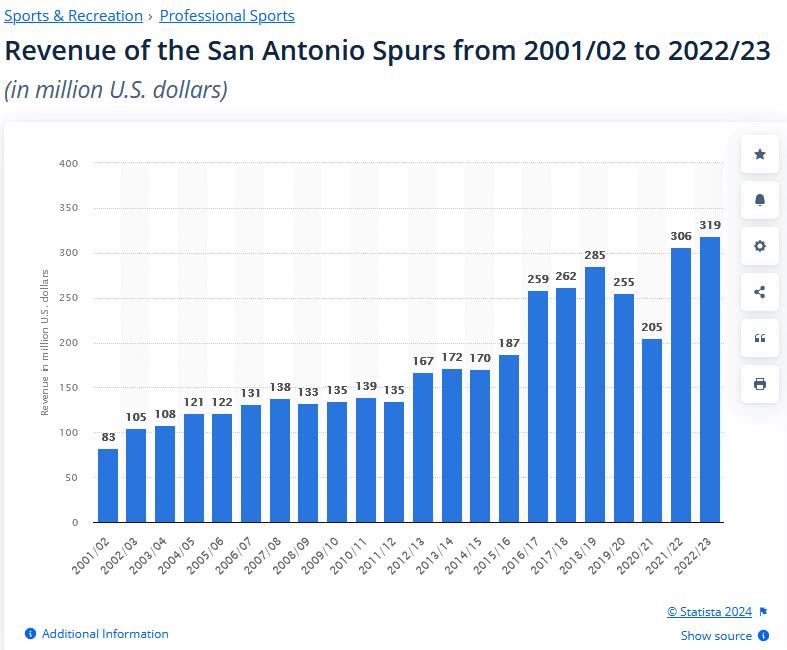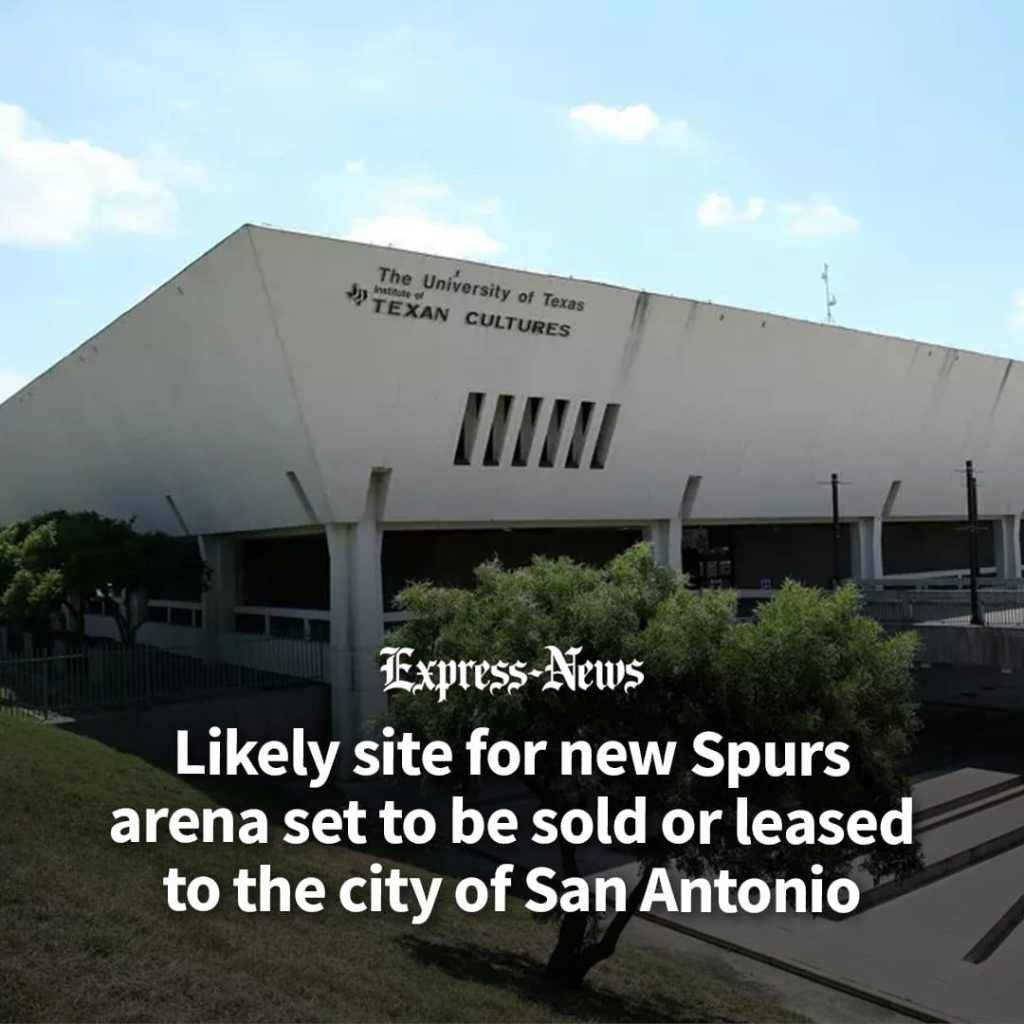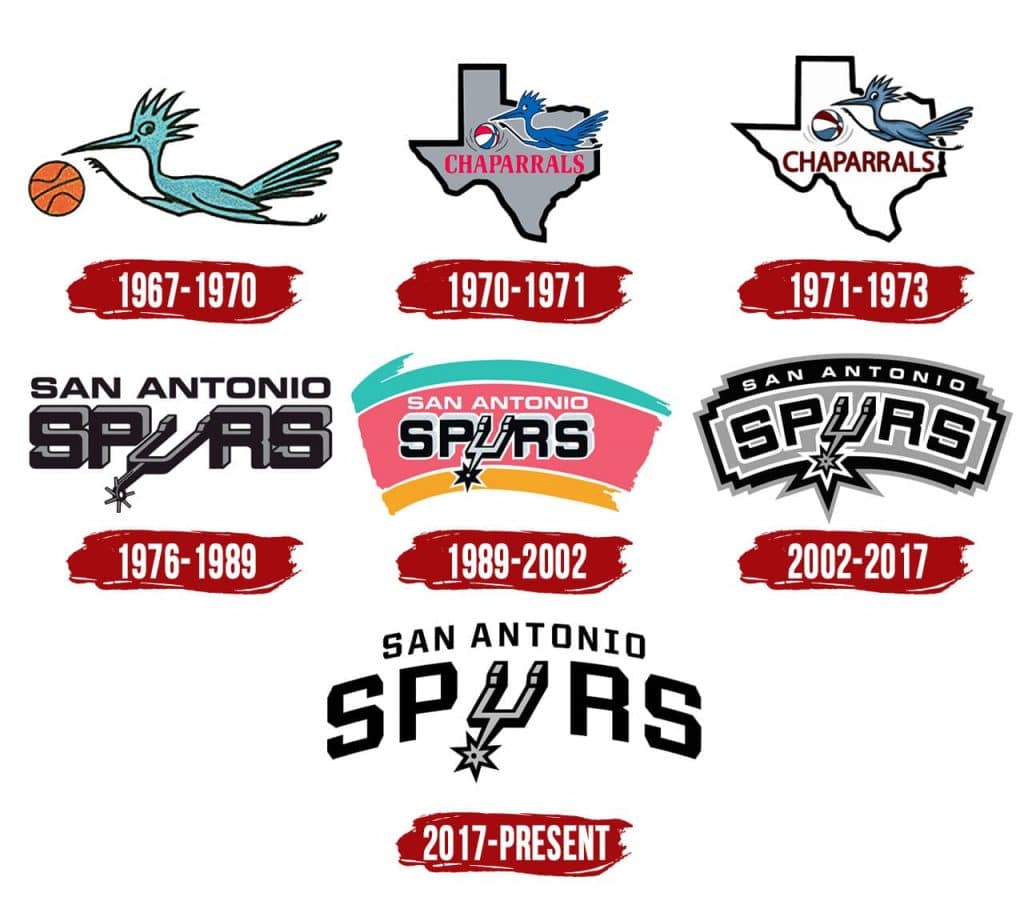The San Antonio Express-News continues to write article, after article, after article on the Spurs’ interest in moving to a new arena. As time goes on, more and more of these articles include statements that a new arena could be a “potential downtown revitalization project” that brings “together sports, dining and drinking”. The Spurs believe that a new arena would “revitalize downtown”. Except, haven’t San Antonio residents heard that claim before? Yes, they heard this exact claim many times. Why? Because the Spurs seem to ask for a new arena every few years. Whenever they push for a new home, we get to hear about the many claims of economic glory that will follow a new sports venue.
In 1993, the Spurs began to play games in the newly constructed Alamodome. Not three full years went by before the Spurs approached the city about a newer arena. Even though their current arena was basically new, and the team led the NBA in attendance, the team claimed to need “more luxury suite revenues” and a “more intimate atmosphere”. As a side note, considering how much money the Spurs have taken from taxpayers over the years, I do find it farcical that the Spurs owners were telling the public in 1996 that they were “investigating a new, privately financed arena”.

— Statista
Then in 2002, the Spurs got their new arena after 60% of residents in Bexar County “voted in favor of raising hotel and rental car taxes to help fund a $175 million arena”. The voters approved this tax increase because they were told that a new arena would “spark economic development opportunities” and would be a “new node for economic development”. How did it do? As one author noted, the Spurs arena “failed as (a) catalyst for economic development (in) their neighborhood”.
Come on, just how bad could they have failed?
“Five years (after the arena was built), the Spurs were already asking for more tax breaks to improve the arena while the neighborhood has seen almost no change or new investment…Instead, a tattoo parlor which opened in 2006 in the midst of numerous boarded-up buildings is essentially the extent of development or lack thereof, which has occurred around the arena” — Whether Building a New Sports Arena Will Revitalize Downtown and Make the Team a Winner, Brian Yates, 07/01/09
I bring all of this up because of a recent story by KSAT in San Antonio. The station did a story that discussed the frustration of some locals who say the Spurs made all sorts of promises when they needed the vote in 2002. However, after the team won the vote, they proceeded to follow through on nothing.

— San Antonio Express News
Last year, when the rumors of a new arena began to come out publicly, some locals near the current arena were not happy at the thought of the Spurs. Even as the team had its usual PR people claiming that a new arena would “revive downtown”, the local newspaper noted how the current arena “never delivered” on a single promise of economic activity.
The city councilman for the area where the current arena sits was not that happy when a San Antonio Express-News reporter asked him about the possibility of a downtown arena:
“Off the jump, this leaves the question of what happens to the AT&T Center that never fulfilled its promises to spur positive development on the eastside…A new stadium cannot and should not happen until there are steps to remedy this broken agreement” — District 2 Councilman Jalen McKee-Rodriguez, San Antonio Express-News, 07/22/23
Reading about just how inept the city of San Antonio was with negotiations with the Spurs is frankly unbelievable. In 2001-2002, the city commissioned a report that discussed how a new arena would “spread the wealth” thanks to a ton of new “spinoff economic development opportunities”. Another report that was commissioned by the city and county “reinforced the idea that the (new arena) would revitalize the area”. This report goes on to claim that even though residents were worried about traffic caused by a new arena, all anxiety is “offset by hopes that the new arena will act as a tool for revitalization”.
One slight problem. The team knew that everything in the report was crap. The San Antonio Express-News was able to talk to one man who was hired by the Spurs to get the 2002 vote passed.

— MySanAntonio.com
How did he do it? Easy, actually.
- The Spurs campaign intentionally avoided making explicit promises of economic benefits for the community
- The Spurs campaign intentionally did not talk about jobs that would be created
- The Spurs campaign intentionally did not talk about development near the arena site.
The city better have smarter people negotiating this time. Arguably the biggest issue with the last arena was whether the city would see a share of the team’s revenues from the arena. By some accounts, it was literally the last thing that the team and city discussed when they agreed to the last arena. After going back and forth, the city agreed not to take money from the team, who made on average $15 million per year and rising. Instead, the city would take money from a subsidiary of the team (called CAM) that managed the arena. The deal says that when the subsidiary makes over $4.75 million a year, the county gets 20% of the operating income.
How did this work out? Terrible. Why? The subsidiary lost money every year. Good luck even getting into positive numbers. As of 2015, the best financial year for CAM had the subsidiary losing $6.5 million. Total losses? $82 million (again, as of 2015). Why was CAM losing so much money? Good question.

— SpursTalk.com
A 2008 county audit of the arena found out that most of the revenues go to the Spurs, while most of the expenses go to CAM.
- The Spurs keep the revenue from basketball games
- The Spurs keep proceeds from tickets
- The Spurs keep proceeds from advertising
- The Spurs keep proceeds from concessions
- The Spurs keep proceeds from parking
- The Spurs keep proceeds from restaurants
- The Spurs keep proceeds from the sale of the arena’s naming rights.
- The Spurs keep revenue from the games of the Rampage ice-hockey team
These types of mistakes are why so many cities struggle to deal with their sports teams’ financial needs. Cities like San Antonio do not have the right people at the negotiating table. This allowed the Spurs to include contract language that forced virtually all the arena’s expenses on someone else, while the team kept mostly all the revenue. The Spurs ended up paying for less than 25% of the cost to build the arena. Even worse, the Spurs paid for 23% of the improvements years later. But like most professional sports teams, the Spurs do not give out any information about their finances. That is a secret.
The post If the current San Antonio Spurs arena never lived up to its economic promises, why would another new arena be any different? appeared first on Subsidy Stadium.
https://subsidystadium.com/2024/03/07/if-the-current-san-antonio-spurs-arena-never-lived-up-to-its-economic-promises-why-would-another-new-arena-be-any-different/
 Backyard GrillingWeekend WarriorsAdvice from DadBeard GroomingTV Shows for Guys4x4 Off-Road CarsMens FashionSports NewsAncient Archeology World NewsPrivacy PolicyTerms And Conditions
Backyard GrillingWeekend WarriorsAdvice from DadBeard GroomingTV Shows for Guys4x4 Off-Road CarsMens FashionSports NewsAncient Archeology World NewsPrivacy PolicyTerms And Conditions
